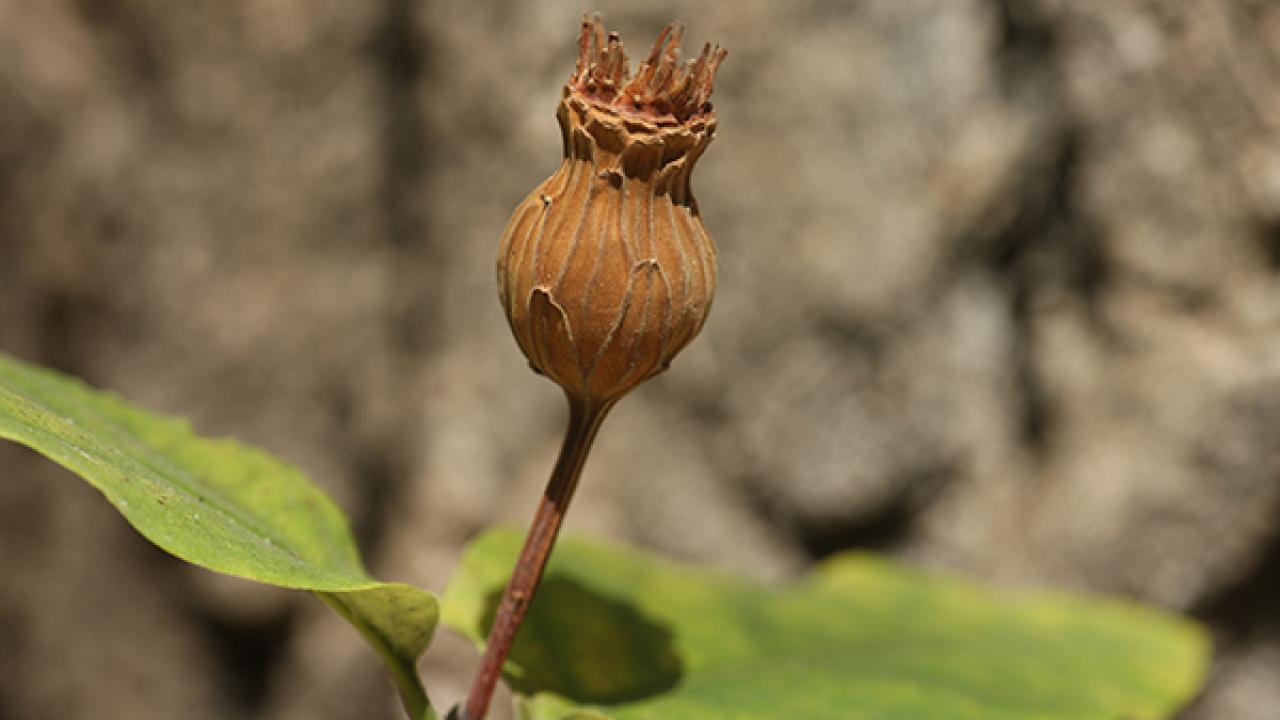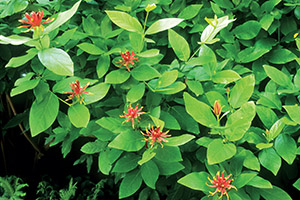
Who knew? Western spicebush and the wasp
The UC Davis Arboretum is more than a regional amenity and nice place to take a stroll. It is used by scientists and researchers at UC Davis for a variety of purposes as well as other botanists, biologists, ecologists, and more. (LEARN MORE about some of the research that takes place here.)
Recently scientist, biodiversity consultant, and former Arboretum intern, Dylan Burge, ventured out in the Arboretum’s Mediterranean Collection to study everyone’s favorite insect villain, the western yellowjacket.

Western yellowjackets, also known as “meat bees” (although they are not bees at all), feed mainly on matter that is high protein, hence their uninvited presence at our BBQs and picnics. Given this well-known behavior it was quite surprising for Burge to observe that western yellowjackets also seem to have an obsession with the seeds (technically achenes) of the western spicebush (Calycanthus occidentalis), an Arboretum All Star.
What is the relationship between this wasp and that plant? Per his blog post on the topic, Burge believes that something about the pod, or rather receptacle that houses the achenes may “. . . mimic some kind of a protein-rich food so that the wasps are fooled into collecting and dispersing the seeds . . .” It also may be that the achenes actually contain something that “. . .these wasps consider nutritious, like . . . fat and protein. . .”
The other cool thing he observed is that the yellowjackets are able to carry the achenes away, but not usually too far because the yellowjackets weigh less than the seeds themselves! According to Burge’s blog post on the topic, “ . . . there is only one other known case of a wasp dispersing any kind of seed or fruit, an it’s in the tropics.” Take a look at great video he shot below showing the incredible tenacity of these insects at work.
Burge’s next steps are to perform a nutritional analysis on the achene, see if the yellowjackets take the achenes back to their nests, and what they do with them there. LEARN MORE Read Dr. Burge’s post The spicebush and the wasp on his blog.
Now, get outside, anywhere is fine, or come to the UC Davis Arboretum to take a closer look at the natural world around you; be a scientist! As Burge shares on his blog, “The real science is in the field, where things that scientists never even imagined possible are happening. They’re just waiting for someone to come along and notice them. . .”
